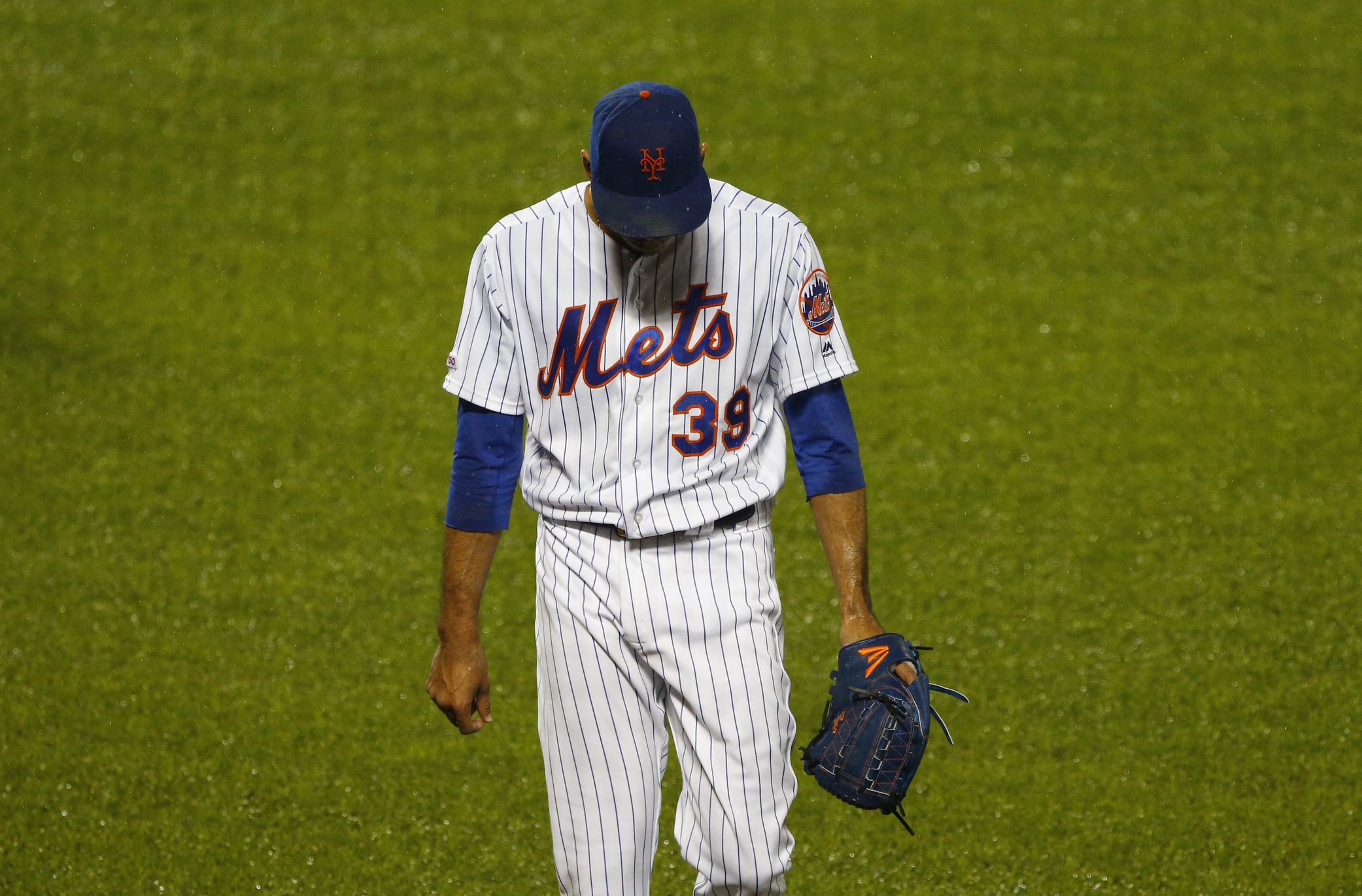
36. That’s the humiliating number of saves the Mets are on pace to blow this season. No team has ever blown more than 34 saves in a single season dating back to 2002, the year FanGraphs started compiling blown saves data. Of the nine teams to blow 30 saves or more, only one of them qualified for the postseason (the 2016 San Francisco Giants, who blew 30 saves, made it the playoffs through the NL Wild Card, eventually falling at the hands of the Cubs in the NLDS).
The average number of wins for a team to blow 30 saves (2002-18) is 74. Only one team in major league history has ever made it to the playoffs with a losing record — the 1981 Royals. It’s worth noting that there was a strike that season and over 700 games were canceled. Here’s where the Mets’ bullpen stands in other statistical categories…
- ERA: 5.47 (third highest in the MLB; would be the highest ERA ever recorded by a Mets bullpen in the last half-century).
- xFIP: 5.02 (second highest)
- BB/9: 4.36 (sixth highest)
- WHIP: 1.53 (fourth highest)
Simply put, it doesn’t get much worse than that. Among the eight Mets’ relievers to register 10 IP this season, only two of them have earned run averages below four: Edwin Diaz (3.74) and Seth Lugo (2.36). Perhaps most disappointing of all, Jeurys Familia, who was just placed on the IL due to a shoulder injury, has pitched to the tune of an atrocious 7.81 ERA. He’s given up 24 earned runs in 27.2 innings pitched, having also blown four saves. Last year, Familia conceded 25 earned runs in 72 IP. Although Diaz has been one of the better relievers for the Mets this season, he’s come nowhere close to meeting expectations.
The Mets parted with three talented prospects in order to pry Diaz from the Seattle, most notably their No. 6 overall pick, outfielder Jarred Kelenic, as well as RHP Justin Dunn and RHP Gerson Bautista. New York also received Robinson Cano and his large contract from the Mariners.
After finishing second in the MLB with 3.5 fWAR last season, Diaz has regressed drastically in 2019. Currently, he is tied with ten other relief pitchers for 44th in the majors with a 0.5 fWAR. In fact, Robert Gsellman (0.6 fWAR) and Seth Lugo (0.8 fWAR) have both been more valuable than Diaz based on wins above replacement. Diaz is already one blown save short from matching his 2018 total (4) with 90 games still remaining. While some blame can be directed towards Mets’ skipper Mickey Callaway, who has repeatedly unsuccessfully called upon Edwin Diaz to pitch in high leverage situations on back-to-back days (5.1 IP, 10 H, 5 ER, 2 BB, and 8 K), Diaz is most responsible for his struggles, especially as of late…
His stats from 5/18/19 – 6/15/19:
- 13 IP
- 19 H
- 3 BB (2.08 BB/9)
- 20 K (13.85 K/9)
- 8 ER (5.54 ERA)
- 3 BS
- 5 SV
His stats from 3/28/19 – 5/11/19:
- 15.2 IP
- 12 H
- 5 BB (2.87 BB/9)
- 25 K (14.36 K/9)
- 4 ER (2.30 ERA)
- 0 BS
- 10 SV
His pitch velocity and pitch frequencies have remained fairly constant during those two stretches, and they closely resemble those of last year (according to FanGraphs)…
Average Fourseam Fastball Velocity
2018: 97.9
2019: 97.4
Pitch Mix
2018: 62.4% four-seam fastball, 37.3% slider, and 0.3% changeup
2019: 62.9% four-seam fastball, 35.4% slider, and 1.8% sinker
Last year, Edwin Diaz surrendered his fifth home run of the season on September 15th. Today is June 18th and he has already given up five dingers. A lack of command has been Diaz’s biggest problem in 2019. Right-handed batters are hitting .309/.365/.441 off of him this season. Lefties have not been as successful in comparison (.222/.265/.489), but they account for three out of the five home runs that Diaz has allowed.

2018

2019 (Heatmaps courtesy of FanGraphs)
As can be seen in the heatmaps above, Diaz is missing over the heart of the plate more regularly this season. He is also pitching right-handed hitters down in the zone less frequently and he is not challenging them inside as much as he was last year, both of which are hindering his success. There is also the possibility that Diaz has been tipping his pitches. According to Brooks Baseball, in the months of May and June, Diaz has been releasing his slider ~2.4 inches higher than his four-seam fastball, a differential hitters could potentially pick up on.

6-13-19 Fourseam Fastball Release Point (Photos via Baseball Savant)

6-15-19 Slider Fastball Release Point
As can be seen in the photos above, he is indeed releasing his four-seamer at a higher point (for reference, see where the ball is in relation to the “Mets” writing behind home plate). This could theoretically explain why Diaz has seen his HR/9 rate skyrocket from 0.61 to 1.57. Diaz has certainly regressed in 2019, but there’s reason to believe he has suffered from batted ball misfortunate. His FIP and xFIP are 3.25 and 2.73, respectively, and his BABIP is .406. Only three qualified relievers in MLB history have ever recorded a BABIP of .400 or above…
- 1873 Bob Ferguson, Atlantics: .417
- 2013 Jose Mijares, Giants: .410
- 1971 Claude Raymond, Expos: .400
Ultimately, Edwin Diaz and the rest of the Mets’ pen are going to need to raise their game big time if the Mets have any desires to acquaint themselves with .500 ball once again this season. It is crucial that Diaz looks into altering his four-seam fastball and slider release points, which could enable him to have better command of his pitches, against right-handed hitters, in particular, going forward.















